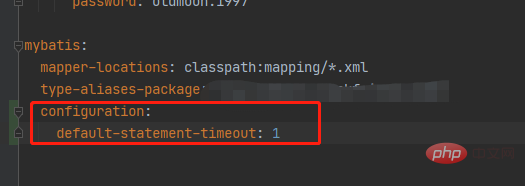上次我们在《 游标脚本性能问题解决与分析 》讨论过动态游标的执行计划如何选择并且介绍了几种游标的基本知识。本文我们接着研究键集游标选择执行计划的方式和影响因素。 这这里我们通过一个简单的实验来对比测试并且说明结果。 准备如下测试环境 : CREATE T
上次我们在《游标脚本性能问题解决与分析》讨论过动态游标的执行计划如何选择并且介绍了几种游标的基本知识。本文我们接着研究键集游标选择执行计划的方式和影响因素。
这这里我们通过一个简单的实验来对比测试并且说明结果。
准备如下测试环境:
CREATE TABLE [dbo].[test_cursor](
[number] [int] IDENTITY(1,1) NOT NULL,
[name] [varchar](500) NULL,
[xtype] [varchar](500) NULL,
[type] [varchar](500) NULL,
[parent_obj] [varchar](500) NULL,
[crdate] [datetime] NULL,
[id] [varchar](500) NULL,
[sysstat] [int] NULL,
CONSTRAINT [PK_test_cursor] PRIMARY KEY CLUSTERED
(
[number] ASC
)WITH (PAD_INDEX = OFF, STATISTICS_NORECOMPUTE = OFF, IGNORE_DUP_KEY = OFF, ALLOW_ROW_LOCKS = ON, ALLOW_PAGE_LOCKS = ON) ON [PRIMARY]
) ON [PRIMARY]
反复运行下面的Insert语句15次以构造测试数据:
insert into test_cursor (name,xtype,type, parent_obj,crdate,id,sysstat) select name,xtype,type, parent_obj,crdate,id,sysstat from AdventureWorks.dbo.sysobjects.
然后,为该表创建如下索引,
create index i_test_cursor_1 on test_cursor (id, crdate) include (number, name,xtype,type,parent_obj,sysstat)
create index i_test_cursor_2 on test_cursor(id,crdate)
执行以下Select语句,我们能得到下面的执行计划和统计信息:
SELECT * FROM test_cursor WHERE id>'92' ORDER BY crdate --index seek on i_test_cursor_1
Table 'test_cursor'. Scan count 1, logical reads 17, physical reads 0, read-ahead reads 0, lob logical reads 0, lob physical reads 0, lob read-ahead reads 0.
Rows Executes StmtText
-------------------- -------------------- ---------------------------------------------------------------------------------------------------------------------------------------
992 1 SELECT * FROM [test_cursor] WHERE [id]>@1 ORDER BY [crdate] ASC
992 1 |--Sort(ORDER BY:([aa].[dbo].[test_cursor].[crdate] ASC))
992 1 |--Index Seek(OBJECT:([aa].[dbo].[test_cursor].[i_test_cursor_1]), SEEK:([aa].[dbo].[test_cursor].[id] > '92')
SELECT * FROM test_cursor WHERE id>'92' ORDER BY number -index seek on i_test_cursor_1
Table 'test_cursor'. Scan count 1, logical reads 17, physical reads 0, read-ahead reads 0, lob logical reads 0, lob physical reads 0, lob read-ahead reads 0.
Rows Executes StmtText
-------------------- -------------------- ---------------------------------------------------------------------------------------------------------------------------------------
992 1 SELECT * FROM [test_cursor] WHERE [id]>@1 ORDER BY [number] ASC
992 1 |--Sort(ORDER BY:([aa].[dbo].[test_cursor].[number] ASC))
992 1 |--Index Seek(OBJECT:([aa].[dbo].[test_cursor].[i_test_cursor_1]), SEEK:([aa].[dbo].[test_cursor].[id] > '92') ORDERED FORWARD)
以上两个ad-hoc的语句都是使用了我们创建的index test_cursor迅速的定位和返回相应的行。
 SQL Server使用CROSS APPLY与OUTER APPLY实现连接查询Aug 26, 2022 pm 02:07 PM
SQL Server使用CROSS APPLY与OUTER APPLY实现连接查询Aug 26, 2022 pm 02:07 PM本篇文章给大家带来了关于SQL的相关知识,其中主要介绍了SQL Server使用CROSS APPLY与OUTER APPLY实现连接查询的方法,文中通过示例代码介绍的非常详细,下面一起来看一下,希望对大家有帮助。
 SQL Server解析/操作Json格式字段数据的方法实例Aug 29, 2022 pm 12:00 PM
SQL Server解析/操作Json格式字段数据的方法实例Aug 29, 2022 pm 12:00 PM本篇文章给大家带来了关于SQL server的相关知识,其中主要介绍了SQL SERVER没有自带的解析json函数,需要自建一个函数(表值函数),下面介绍关于SQL Server解析/操作Json格式字段数据的相关资料,希望对大家有帮助。
 聊聊优化sql中order By语句的方法Sep 27, 2022 pm 01:45 PM
聊聊优化sql中order By语句的方法Sep 27, 2022 pm 01:45 PM如何优化sql中的orderBy语句?下面本篇文章给大家介绍一下优化sql中orderBy语句的方法,具有很好的参考价值,希望对大家有所帮助。
 Monaco Editor如何实现SQL和Java代码提示?May 07, 2023 pm 10:13 PM
Monaco Editor如何实现SQL和Java代码提示?May 07, 2023 pm 10:13 PMmonacoeditor创建//创建和设置值if(!this.monacoEditor){this.monacoEditor=monaco.editor.create(this._node,{value:value||code,language:language,...options});this.monacoEditor.onDidChangeModelContent(e=>{constvalue=this.monacoEditor.getValue();//使value和其值保持一致i
 一文搞懂SQL中的开窗函数Sep 02, 2022 pm 04:55 PM
一文搞懂SQL中的开窗函数Sep 02, 2022 pm 04:55 PM本篇文章给大家带来了关于SQL server的相关知识,开窗函数也叫分析函数有两类,一类是聚合开窗函数,一类是排序开窗函数,下面这篇文章主要给大家介绍了关于SQL中开窗函数的相关资料,文中通过实例代码介绍的非常详细,需要的朋友可以参考下。
 如何使用exp进行SQL报错注入May 12, 2023 am 10:16 AM
如何使用exp进行SQL报错注入May 12, 2023 am 10:16 AM0x01前言概述小编又在MySQL中发现了一个Double型数据溢出。当我们拿到MySQL里的函数时,小编比较感兴趣的是其中的数学函数,它们也应该包含一些数据类型来保存数值。所以小编就跑去测试看哪些函数会出现溢出错误。然后小编发现,当传递一个大于709的值时,函数exp()就会引起一个溢出错误。mysql>selectexp(709);+-----------------------+|exp(709)|+-----------------------+|8.218407461554972
 springboot配置mybatis的sql执行超时时间怎么解决May 15, 2023 pm 06:10 PM
springboot配置mybatis的sql执行超时时间怎么解决May 15, 2023 pm 06:10 PM当某些sql因为不知名原因堵塞时,为了不影响后台服务运行,想要给sql增加执行时间限制,超时后就抛异常,保证后台线程不会因为sql堵塞而堵塞。一、yml全局配置单数据源可以,多数据源时会失效二、java配置类配置成功抛出超时异常。importcom.alibaba.druid.pool.DruidDataSource;importcom.alibaba.druid.spring.boot.autoconfigure.DruidDataSourceBuilder;importorg.apache.
 Monaco Editor怎么实现SQL和Java代码提示May 11, 2023 pm 05:31 PM
Monaco Editor怎么实现SQL和Java代码提示May 11, 2023 pm 05:31 PMmonacoeditor创建//创建和设置值if(!this.monacoEditor){this.monacoEditor=monaco.editor.create(this._node,{value:value||code,language:language,...options});this.monacoEditor.onDidChangeModelContent(e=>{constvalue=this.monacoEditor.getValue();//使value和其值保持一致i


Hot AI Tools

Undresser.AI Undress
AI-powered app for creating realistic nude photos

AI Clothes Remover
Online AI tool for removing clothes from photos.

Undress AI Tool
Undress images for free

Clothoff.io
AI clothes remover

AI Hentai Generator
Generate AI Hentai for free.

Hot Article

Hot Tools

SAP NetWeaver Server Adapter for Eclipse
Integrate Eclipse with SAP NetWeaver application server.

MinGW - Minimalist GNU for Windows
This project is in the process of being migrated to osdn.net/projects/mingw, you can continue to follow us there. MinGW: A native Windows port of the GNU Compiler Collection (GCC), freely distributable import libraries and header files for building native Windows applications; includes extensions to the MSVC runtime to support C99 functionality. All MinGW software can run on 64-bit Windows platforms.

VSCode Windows 64-bit Download
A free and powerful IDE editor launched by Microsoft

MantisBT
Mantis is an easy-to-deploy web-based defect tracking tool designed to aid in product defect tracking. It requires PHP, MySQL and a web server. Check out our demo and hosting services.

mPDF
mPDF is a PHP library that can generate PDF files from UTF-8 encoded HTML. The original author, Ian Back, wrote mPDF to output PDF files "on the fly" from his website and handle different languages. It is slower than original scripts like HTML2FPDF and produces larger files when using Unicode fonts, but supports CSS styles etc. and has a lot of enhancements. Supports almost all languages, including RTL (Arabic and Hebrew) and CJK (Chinese, Japanese and Korean). Supports nested block-level elements (such as P, DIV),






